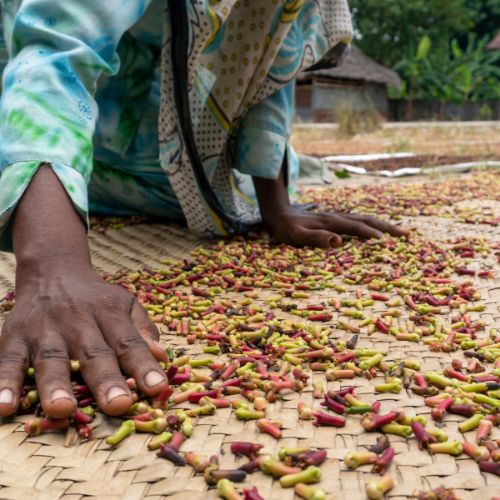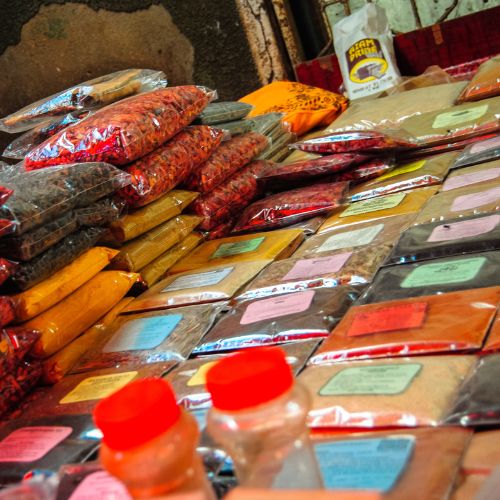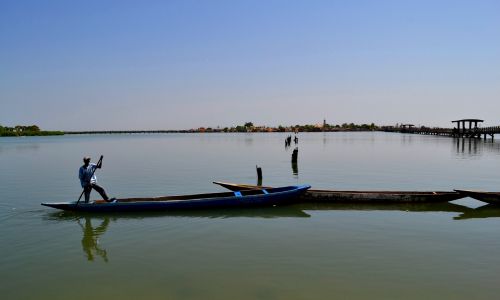Off the coast of East Africa is a Tanzanian-ruled archipelago known as Zanzibar. Zanzibar boasts a long, rich history—humans have lived there for over 20,000 years, since the Later Stone Age.
While much of Zanzibar’s early history has been lost to the sands of time, its trade route past is well documented and has left a lasting impact on the islands. While Zanzibar has traded in a variety of goods, including ivory and gold, its name has become synonymous with the spice trade.
Interested in learning more about the “spicy” history of Zanzibar’s trade route past? You’ll be shocked by all the twists and turns, just as the traders who walked these very same roads once were.
Why Is Zanzibar So Well-Known for Spices?
Zanzibar has a long history of spice cultivation and trade that dates back to ancient times. With their warm, tropical climate and fertile soil, both the mainland, Tanganyika, and Tanzania’s many “spice islands” were suitable for growing a wide variety of spices. This includes cloves, nutmeg, cinnamon, black pepper, and many more. At different points in time, the island was colonized by the Persians, Portuguese, Arabs, and British, all of whom contributed to the growth and development of the spice industry on the island.
Zanzibar also has a strategic location that opens it up to trade across countries and continents. The Indian Ocean connects it to much of Eastern Africa, as well as parts of the Middle East and India. This gives the island access to buyers and traders from many large and flourishing economies.
Ultimately, the combination of an ideal climate, rich soil, and strategic location helped make Zanzibar one of the top spice producers in the world.
The Earliest Records of Zanzibar’s Trade Route
Zanzibar has had an established trade route since as far back as 2500–2400 BC, based on pendants and other trinkets discovered in various regions that were traced back to the island. Given the location of Zanzibar, some areas they had likely trader relations with include Somalia, Arabia, Persia, and India. Presumably, they took advantage of high winds during monsoon season to trade by sea. These connections allowed for the exchange of goods such as ivory, gold, and, of course, spices.
The Rise of the Spice Trade
Many consider the spice trade to be the very beginning of globalization, or the process of increasing interconnectedness and interdependence among nations. Spices were very popular and highly valued in ancient times—even our ancestors didn’t want to eat bland food all the time. People also used spices as currency, medicine, and a means to preserve food. You could also commonly find hints of spice in perfumes and incense, giving these items their signature scents.
The issue is that spices were extremely rare and expensive. Many types of spice required long and dangerous journeys to obtain, which made them a symbol of wealth and status.
Tanzania, however, had spices galore and easy access to many locations along the Indian Ocean. It quickly became a major trade hub for spices and drew traders and explorers from different parts of the world—but not without a little help from some savvy settlers.

The Arrival of the Arabs
While Zanzibar had the climate, soil, and location to facilitate the growth and trade of spices, it was the Arabs who truly capitalized on this potential. Around the 11th century, Arab traders arrived in Zanzibar, bringing with them a knowledge of spice cultivation and trade.
They introduced new methods of irrigation and planting, which further increased the production of spices on the island. This helped establish Zanzibar as a major player in the global spice trade.
The Portuguese Invasion
In the 15th century, European explorers began to set their sights on the lucrative spice trade in East Africa. The Portuguese were the first to arrive, led by Vasco da Gama, who landed on the shores of Zanzibar in 1498. They quickly established a trading post and took control of the island’s spice production.
The Portuguese brought with them new methods of cultivation and processing, which further improved the quality and quantity of spices produced on the island. However, their rule was short-lived, as they were ousted by the Omani Arabs in 1698.
The Omani Empire
Under Omani rule, Zanzibar flourished as a center for spice production and trade. The Arabs brought with them their own methods of cultivation and processing, as well as new crops such as cloves, which would become the island’s most valuable export. Zanzibar became known as the “Spice Island” and its trade routes extended to the Middle East, India, and Europe.
Unfortunately, this prosperity came at a cost for the local population. The Omani Arabs brought with them the slave trade, and Zanzibar became a major center for trading African slaves to work on plantations in other parts of the world. This was largely because more workers were required to meet the growing demand for spices, and slaves were seen as cheap labor.

Zanzibar Today
Zanzibar is still a large producer of spices in the 21st century. It grows a variety of spices including cloves, nutmeg, cinnamon, and black pepper. These are an important part of the local economy and can be found in almost every aspect of Zanzibari life, from food to traditional medicine. The good news is that, while remnants of the darker aspects of Zanzibar’s past still linger, the island has since moved toward a more humane, less exploitative society, and most spices are grown using ethical and sustainable practices.
That said, the demand for spices is nowhere near what it used to be, thanks to the globalized spice trade. In response, the Zanzibari economy has diversified, with industries like tourism and fishing contributing to its growth. Now, Zanzibar is known for its beautiful beaches, vibrant culture, and historical significance. The island attracts tourists from all over the world who come to explore its winding streets filled with spice markets, visit ancient ruins and mosques, and relax on its beautiful beaches.
Are you interested in delving deeper into Zanzibar’s rich history and culture? Join Palace Travel on a Zanzibar tour that explores everything the archipelago has to offer, from its UNESCO World Heritage Site of Stone Town to the pristine beaches of Nungwi and Paje. Our expert guides will take you on a journey through time, sharing stories of Zanzibar’s “spicy” trade route past while also allowing you to experience the modern culture and way of life. Book your adventure today!




